
How to Use STM-32 NUCLEO-F401RE: Examples, Pinouts, and Specs
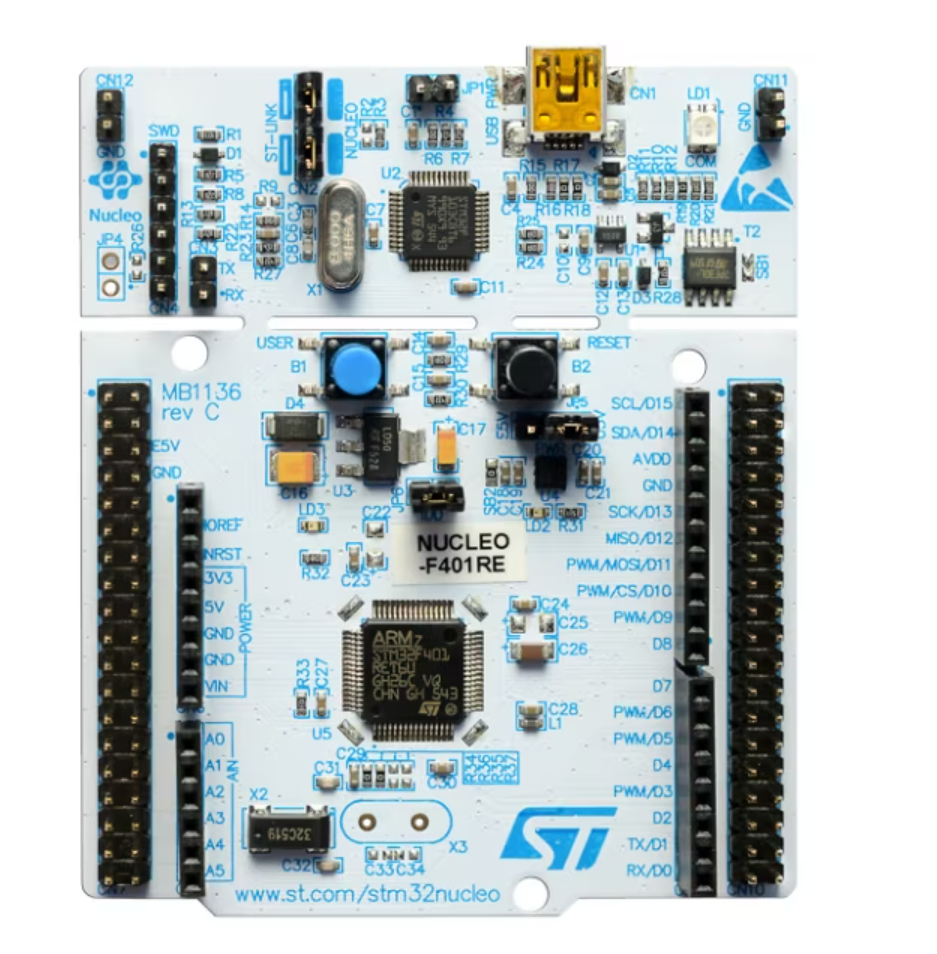
 Design with STM-32 NUCLEO-F401RE in Cirkit Designer
Design with STM-32 NUCLEO-F401RE in Cirkit DesignerIntroduction
The STM-32 NUCLEO-F401RE is a development board manufactured by STMicroelectronics, featuring the STM32F401RE microcontroller. This board is designed for rapid prototyping and development of embedded applications. It provides a wide range of interfaces, connectivity options, and compatibility with Arduino and ST morpho headers, making it versatile for various projects.
Explore Projects Built with STM-32 NUCLEO-F401RE
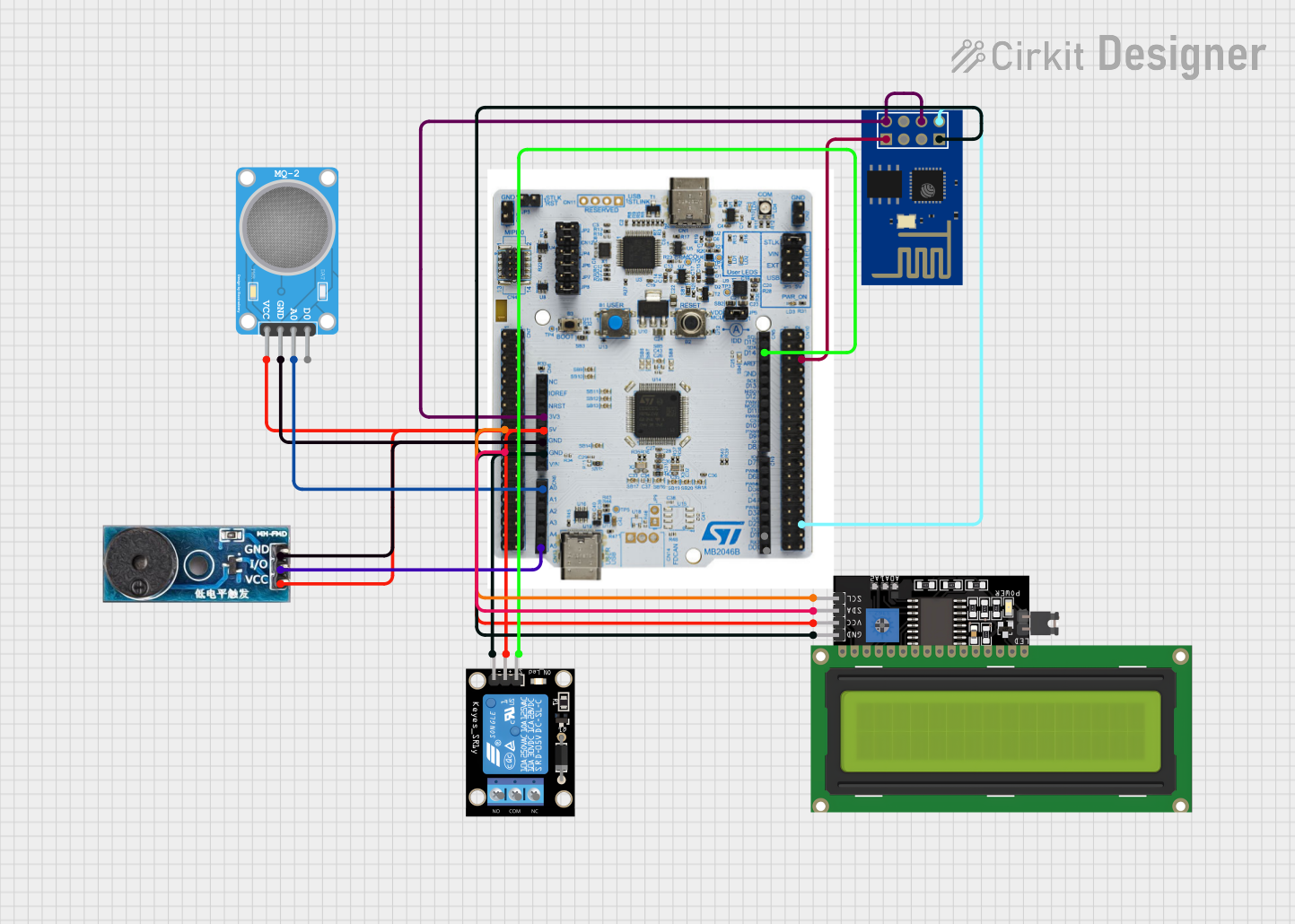
 Open Project in Cirkit Designer
Open Project in Cirkit Designer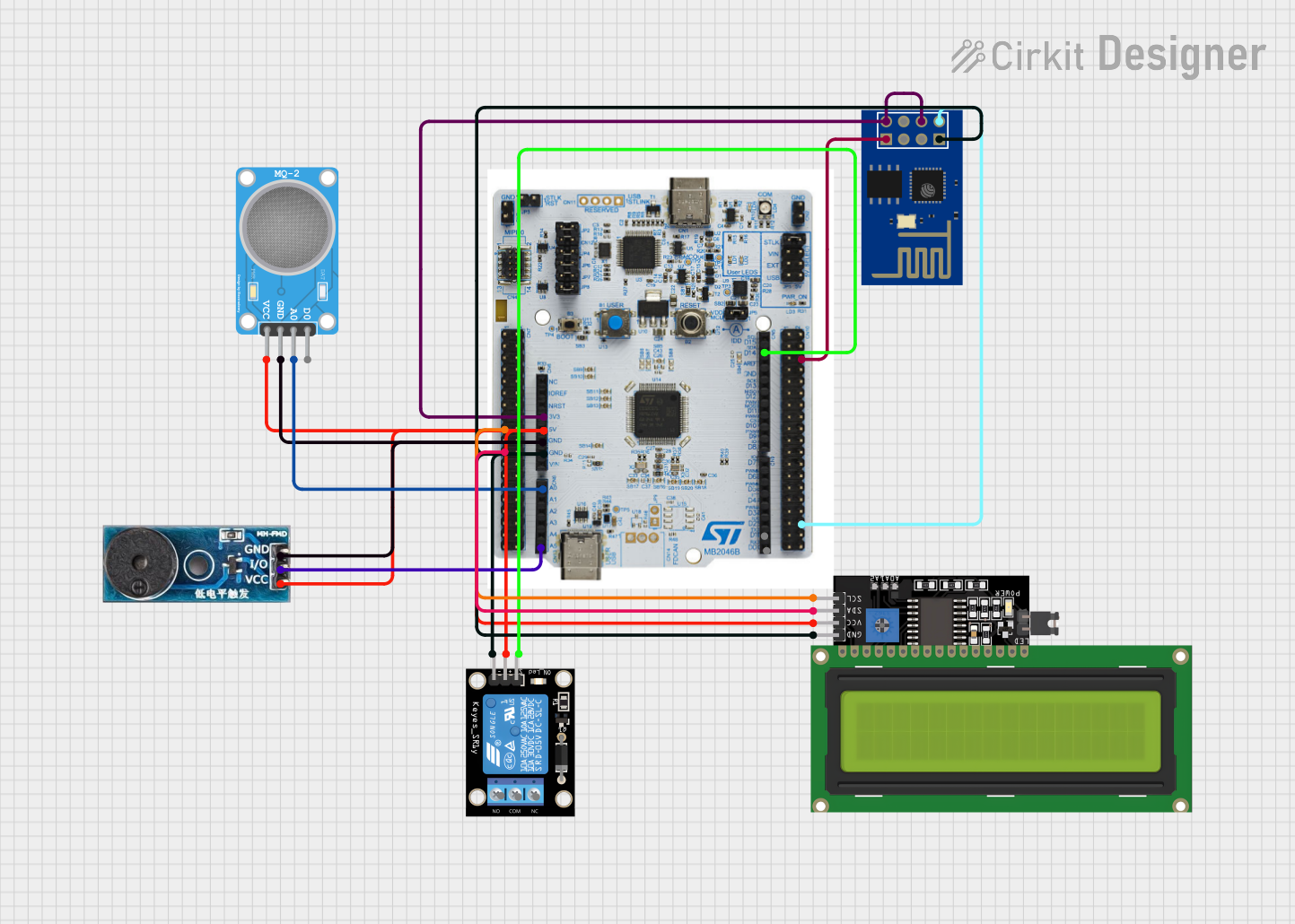
 Open Project in Cirkit Designer
Open Project in Cirkit Designer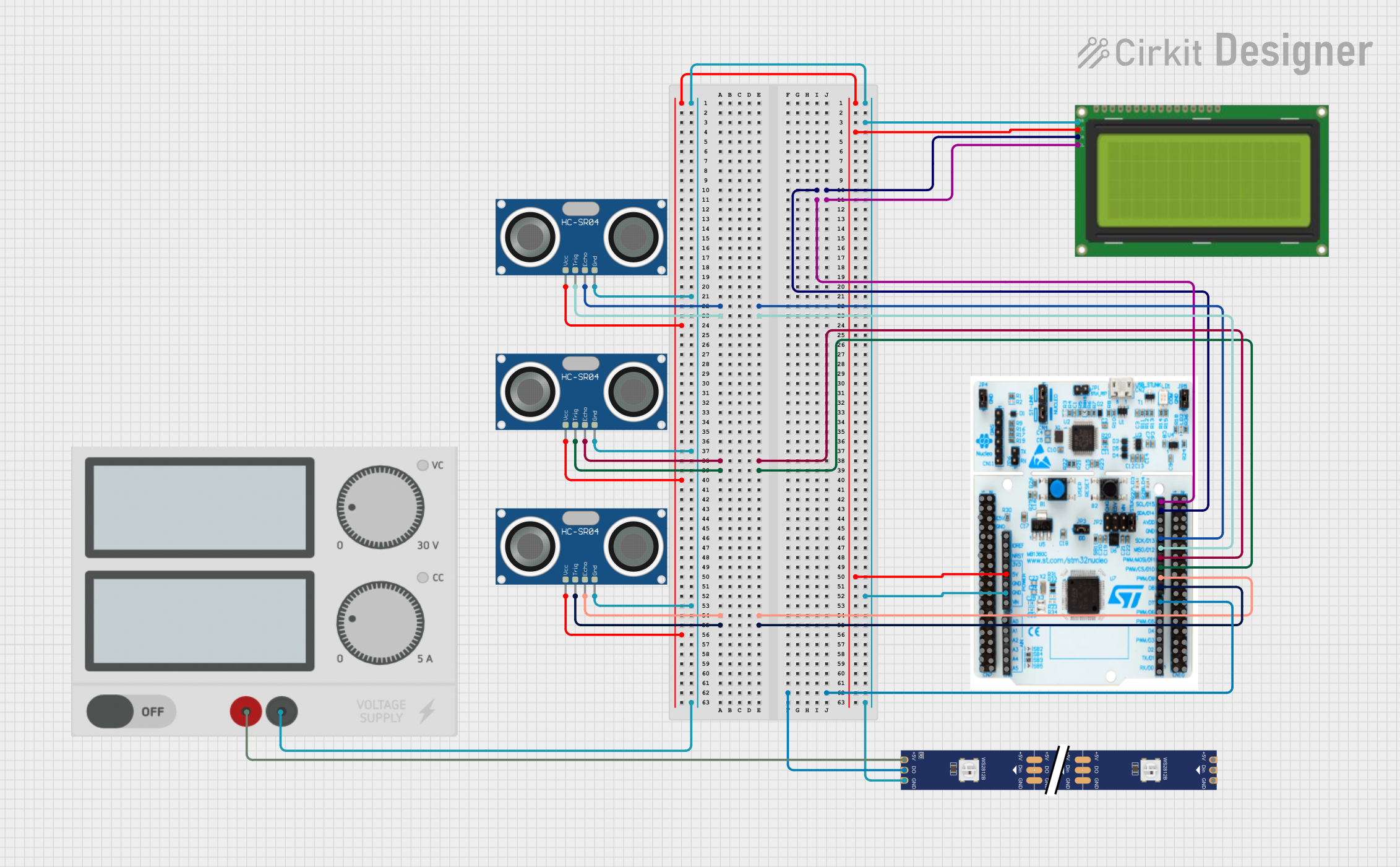
 Open Project in Cirkit Designer
Open Project in Cirkit Designer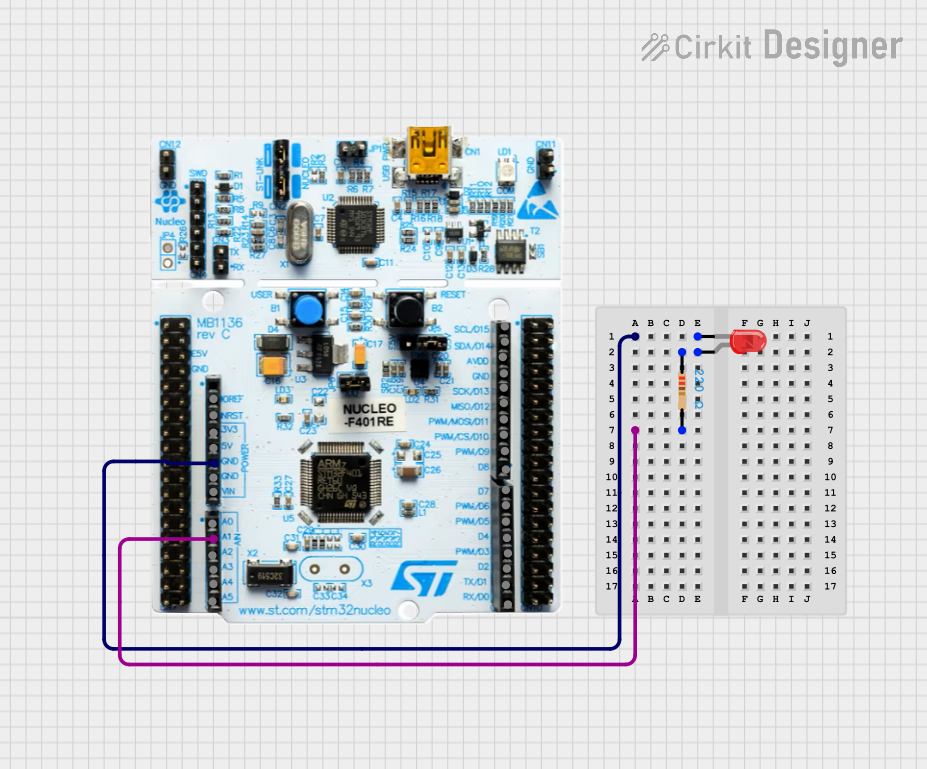
 Open Project in Cirkit Designer
Open Project in Cirkit DesignerExplore Projects Built with STM-32 NUCLEO-F401RE

 Open Project in Cirkit Designer
Open Project in Cirkit Designer
 Open Project in Cirkit Designer
Open Project in Cirkit Designer
 Open Project in Cirkit Designer
Open Project in Cirkit Designer
 Open Project in Cirkit Designer
Open Project in Cirkit DesignerCommon Applications and Use Cases
- IoT (Internet of Things) devices
- Robotics and automation systems
- Sensor data acquisition and processing
- Prototyping for industrial and consumer electronics
- Educational purposes for learning embedded systems
Technical Specifications
Key Technical Details
- Microcontroller: STM32F401RE (ARM Cortex-M4, 32-bit, 84 MHz)
- Flash Memory: 512 KB
- SRAM: 96 KB
- Operating Voltage: 3.3V
- Input Voltage (via USB): 5V
- Input Voltage (via VIN): 7V to 12V
- Digital I/O Pins: 50 (shared between Arduino and ST morpho headers)
- Analog Input Pins: 6 (12-bit ADC)
- PWM Output Pins: 12
- Communication Interfaces:
- 3x USART/UART
- 3x SPI
- 2x I2C
- Onboard Debugger: ST-LINK/V2-1
- Connectivity: USB, Arduino Uno R3 compatibility, ST morpho headers
- Dimensions: 68.6 mm x 53.3 mm
Pin Configuration and Descriptions
The STM-32 NUCLEO-F401RE features two main pin headers: Arduino Uno R3-compatible headers and ST morpho headers. Below is a summary of the pin configuration:
Arduino Uno R3-Compatible Header
| Pin Name | Function | Description |
|---|---|---|
| D0-D1 | UART RX/TX | Serial communication pins |
| D2-D13 | Digital I/O | General-purpose digital I/O pins |
| A0-A5 | Analog Input | 12-bit ADC channels |
| 3.3V | Power Output | 3.3V regulated output |
| 5V | Power Output | 5V regulated output |
| GND | Ground | Common ground |
| VIN | Power Input | External power input (7V-12V) |
| RESET | Reset | Resets the microcontroller |
ST Morpho Header
| Pin Name | Function | Description |
|---|---|---|
| PAx, PBx | GPIO | General-purpose I/O pins |
| VDD | Power Supply | 3.3V power supply |
| GND | Ground | Common ground |
| NRST | Reset | Microcontroller reset |
| OSC_IN | External Oscillator In | Input for external clock source |
| OSC_OUT | External Oscillator Out | Output for external clock source |
Usage Instructions
How to Use the Component in a Circuit
Powering the Board:
- Connect the board to your computer via the micro-USB cable for power and programming.
- Alternatively, supply power through the VIN pin (7V-12V) or the 5V pin.
Programming the Board:
- Use the onboard ST-LINK/V2-1 debugger to program the microcontroller.
- Compatible with STM32CubeIDE, Keil, IAR, and Arduino IDE.
Connecting Peripherals:
- Use the Arduino Uno R3-compatible headers for shields and modules.
- Use the ST morpho headers for advanced GPIO and peripheral access.
Uploading Code:
- Write your code in the IDE of your choice.
- Compile and upload the code via the ST-LINK interface.
Important Considerations and Best Practices
- Ensure the input voltage does not exceed the specified range to avoid damage.
- Use decoupling capacitors when connecting external components to reduce noise.
- Avoid connecting high-current loads directly to the GPIO pins.
- Use proper level shifters when interfacing with 5V logic devices.
Example Code for Arduino IDE
Below is an example code to blink an LED connected to pin D13:
// Blink an LED on pin D13 of the STM-32 NUCLEO-F401RE
void setup() {
pinMode(13, OUTPUT); // Set pin D13 as an output
}
void loop() {
digitalWrite(13, HIGH); // Turn the LED on
delay(1000); // Wait for 1 second
digitalWrite(13, LOW); // Turn the LED off
delay(1000); // Wait for 1 second
}
Troubleshooting and FAQs
Common Issues and Solutions
The board is not detected by the computer:
- Ensure the USB cable is properly connected and functional.
- Check if the ST-LINK driver is installed on your computer.
Code upload fails:
- Verify that the correct board and port are selected in the IDE.
- Ensure no other application is using the ST-LINK interface.
The board does not power on:
- Check the power source and ensure the input voltage is within the specified range.
- Inspect the USB cable or external power supply for faults.
GPIO pins are not functioning as expected:
- Confirm the pin mode is correctly configured in the code.
- Check for short circuits or incorrect connections.
FAQs
Q: Can I use the STM-32 NUCLEO-F401RE with 5V logic devices?
A: The board operates at 3.3V logic levels. Use level shifters to interface with 5V devices.
Q: Is the board compatible with Arduino shields?
A: Yes, the board is compatible with most Arduino Uno R3 shields.
Q: How do I reset the board?
A: Press the RESET button on the board or use the NRST pin.
Q: Can I use an external clock source?
A: Yes, connect the external clock to the OSC_IN and OSC_OUT pins on the ST morpho header.